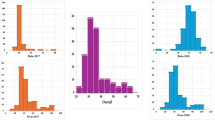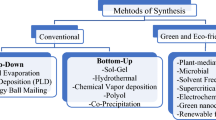Abstract
Zinc tolerance, based on root growth in zinc-containing solutions, was examined in samples of 30 Agrostis capillaris L. individuals collected from populations beneath five electricity pylons in North Wales. The populations were found to vary in zinc tolerance. Three of them contained individuals whose tolerance ranged from low to high, one population consisted of individuals with low to moderate tolerance, whilst the fifth population (ZK-180) contained no tolerant individuals. Differences in zinc tolerance were also found between seedlings raised from five seed populations collected from plants growing in the uncontaminated pasture areas adjacent to four of those pylons, and one further pylon in the same area. The population adjacent to pylon ZK-180 consistently showed little sign of tolerant individuals. Samples of seeds collected from the populations in the uncontaminated areas surrounding each pylon, and likely to have been the origin of the pylon populations were grown at a concentration of 15 μg Zn cm−3, and root lengths of 105 randomly chosen seedlings from each were measured. The means and variance of tolerances of four of the five did not differ, but all were significantly higher than that adjacent to pylon ZK-180. Two cycles of selection and breeding for increased zinc tolerance were carried out using seed samples collected from four of the five populations of adults collected beneath pylons examined previously, and including population ZK-180. Marked increases in tolerance were effected in three of the four populations; no corresponding increase in tolerance was achieved for population ZK-180. It is concluded from these findings that the lack of zinc tolerance beneath pylon ZK-180 is due to the absence of appropriate variation in zinc tolerance within that population, and in potential colonizing material adjacent to it, a situation which contrasts with that for the other three pylons.
Similar content being viewed by others
Article PDF
References
Al-Hiyaly, S E K. 1989. Evolution of zinc tolerance under electricity pylons. Ph.D. Thesis, University of Liverpool.
Al-Hiyaly, S E K, McNeilly, T, and Bradshaw, A D. 1988. The effect of zinc contamination from electricity pylons—evolution in a replicated situation. New Phytol, 110, 571–580.
Al-Hiyaly, S E K, McNeilly, T, and Bradshaw, A D. 1990. The effect of zinc contamination from electricity pylons—contrasting patterns of evolution in five grass species. New Phytol, 114, 183–190.
Antonovics, J. 1986. The genetics and evolution of differences between closely adjacent plant populations with special reference to heavy metal tolerance. Ph.D. Thesis, University of Wales.
Antonovics, J, Bradshaw, A D, and Turner, R G. 1971. Heavy metal tolerance in plants. Adv Ecol Res, 7, 1–85.
Bradshaw, A D. 1975. The evolution of heavy metal tolerance in plants and its significance for vegetation establishment on metal contaminated sites. In: Hutchinson, T. C. (ed.) International Conference; Heavy Metals in the Environment, Vol.II, CEP Consultants Ltd, Edinburgh. Toronto, Canada, 299–322.
Bradshaw, A D. 1984a. Adaptations of plants to soils containing toxic heavy metals -a test for conceit. In: Evered, D. and Collins, G. M. (eds), Origins and Developments of Adaptation, CIBA London, pp. 4–19.
Bradshaw, A D. 1984b. The importance of evolutionary ideas in ecology and vice versa. In: Shorrocks, B. (ed.), Evolutionary Ecology, Blackwell Scientific Publications, London, pp. 1–25.
Bradshaw, A D, and McNeilly, T. 1981. Evolution and Pollution, Edward Arnold, London.
Briggs, D, and Walters, S M. 1982. Plant Variation and Evolution. Cambridge University Press, Cambridge.
Ernst, W. 1976. Physiological and biochemical aspects of heavy metal tolerance. In: Mansfield, T. A. (ed.), Effects of Air Pollutants on Plants. Cambridge University Press, Cambridge, pp. 115–133.
Falconer, D S. 1983. Introduction to Quantitative Genetics, 2nd edn, Longman, London.
Farrow, S J. 1983. Population dynamics and selection in Agrostis canina on a small copper mine. Ph.D. Thesis, University of Liverpool.
Gartside, D W. 1973. The genetics of heavy metal tolerance in plants. Ph.D. Thesis, University of Liverpool.
Gartside, D W, and McNeilly, T. 1974. The potential for evolution of heavy metal tolerance in plantsII. Copper tolerance in normal populations of different species. Heredity, 32, 335–348.
Gleaves, T J. 1973. Gene flow mediated by wind borne pollen. Heredity, 31, 355–366.
Hewitt, E J. 1966. Sand and water culture methods used in the study of plant nutrition. C.A.B. Technical communication No. 22.
Ingram, C. 1987. The evolutionary basis of ecological amplitude of plant species. Ph.D. Thesis, University of Liverpool.
Jain, S K, and Bradshaw, A D. 1968. Evolutionary divergence among adjacent plant populations I. The evidence and its theoretical analysis. Heredity, 21, 407–441.
Karataglis, S. 1980. Variability between and within populations of Agrostis tenuis with respect to metal tolerance. Phyton, 20, 23–32.
Khan, M S I. 1969. The process of evolution of heavy metal tolerance in Agrostis capillaris, and other grasses. M.Sc. Thesis, University of Wales.
McNeilly, T. 1987. Evolutionary lessons from degraded ecosystems. In: Jordon, W. R., Gilpin, M. E, and Aber, J. D. (eds), Restoration Ecology, Cambridge University Press, Cambridge, pp. 271–286.
Qualset, C O. 1975. Sampling germplasm in a centre of diversity: an example of disease resistance in Ethiopian barley. In: Frankel, O. H, and Hawkes, J. G. (eds) Crop Genetic Resources for Today and Tommorow, Cambridge University Press, Cambridge, pp. 81–96.
Symeonidis, L, McNeilly, T, and Bradshaw, A D. 1985. Inter-population variation in tolerance to cadmium, copper, lead, nickel, and zinc in nine populations of Agrostis capillaris L. New Phytol, 101, 317–324.
Thompson, J. 1987. Population Biology of Anthoxanthum odoratum. Plantago Ianceolata, and Rumex acetosa on zinc and lead mine spoil. Ph.D. Thesis, University of Liverpool.
Walley, K A, Khan, M S I, and Bradshaw, A D. 1974. The potential for evolution of heavy metal tolerance in plants I. Copper and zinc tolerance in Agrostis tenuis. Heredity, 32, 309–319.
Wu, L, Bradshaw, A D, and Thurman, D A. 1975. The potential for evolution of heavy metal tolerance in plants III. The rapid evolution of copper tolerance in Agrostis stolonifera. Heredity, 34, 165–187.
Acknowledgements
S. A. Al-Hiyaly was supported by the Iraq Scholarship Directorate, which is gratefully acknowledged.
Author information
Authors and Affiliations
Rights and permissions
About this article
Cite this article
Al-Hiyaly, S., McNeilly, T., Bradshaw, A. et al. The effect of zinc contamination from electricity pylons. Genetic constraints on selection for zinc tolerance. Heredity 70, 22–32 (1993). https://doi.org/10.1038/hdy.1993.4
Received:
Issue date:
DOI: https://doi.org/10.1038/hdy.1993.4
Keywords
This article is cited by
-
Distribution of micro- (Fe, Zn, Cu, and Mn) and risk (Al, As, Cr, Ni, Pb, and Cd) elements in the organs of Rumex alpinus L. in the Alps and Krkonoše Mountains
Plant and Soil (2022)
-
Population genetic pattern of the freshwater fish Amur sleeper (Perccottus glenii) across its native distribution area in China
Conservation Genetics (2021)
-
Lessons on Evolution from the Study of Edaphic Specialization
The Botanical Review (2018)
-
Molecular diversity and population structure of the Ethiopian lentil (Lens Culinaris Medikus) genotype assessment using SSR markers
Journal of Crop Science and Biotechnology (2016)
-
Assessment of genetic diversity in the endangered populations of Breonadia salicina(Rubiaceae) growing in The Kingdom of Saudi Arabia using inter-simple sequence repeat markers
BMC Genetics (2014)



